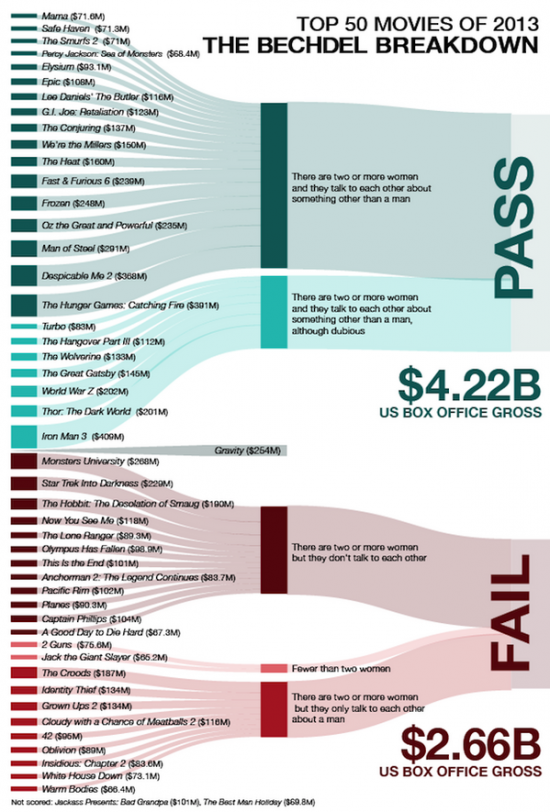Infographic: Movies That Passed The Bechdel Test Made More Money In 2013
Including multiple, multi-faceted female characters in a film isn't just good for social, political, or even artistic reasons. In 2013, it was good for the film's bottom line, too.
In an analysis of the top 50 films of the year, one site found that films that passed the Bechdel test for female representation collectively made more than films that didn't. And we're not talking a few bucks more — by their count, those in the former category raked in $1.5 billion more at the U.S. box office. Hit the jump for a colorful infographic showing how the numbers shake out.
In total, the site found that 24 of the top 50 films passed the Bechdel test, and 21 failed. Two (Jackass Presents: Bad Grandpa and The Best Man Holiday) weren't included in the data at all, for unspecified reasons, and one (Gravity) was not sorted into either category. Even if those three had been added to the mix, however, their numbers wouldn't be big enough to tip the scale in the other direction.
As a tool for measuring how female-friendly a specific film is, the Bechdel test is far from perfect. The reason Gravity was not counted, for example, was because it's a strongly female-centric film that nevertheless fails because the only other (much less central) character is male. As a way to assess general trends, however, the Bechdel test is more useful. And in this case, it shows that incorporating female characters pays off, in a very literal sense.
In an ideal world, the takeaway from this would be that far from alienating audiences, interesting female characters tend to draw them in. Considering how stubborn Hollywood is, though — and how shocked the industry seems any time a Bridesmaids or a Hunger Games makes actual money — I'm not counting on any big changes any time soon.

